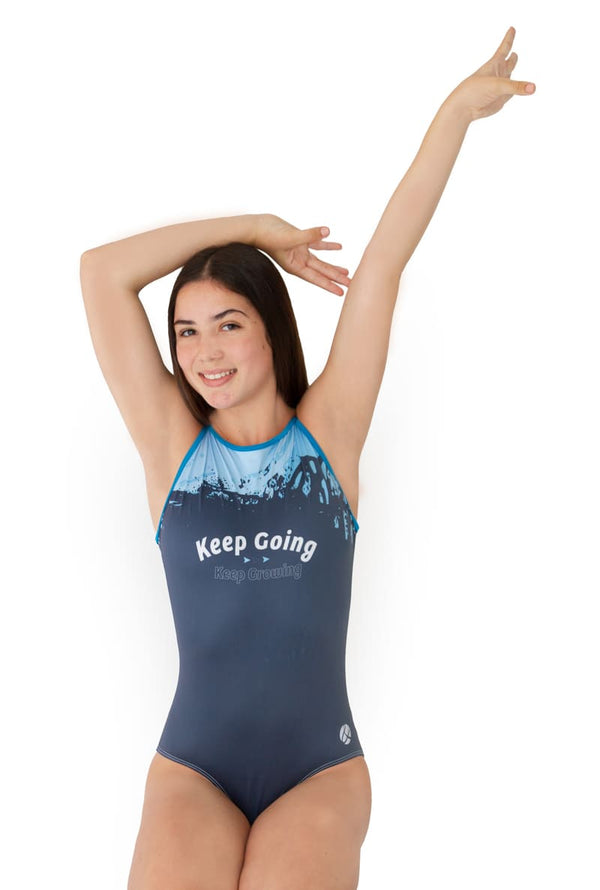Free Shipping on all orders over $75
Free Shipping on all orders over $75
Accessories
Check out our full lineup of yoga accessories to help you with your daily meditation practice and fitness goals...
Try our new Cork Yoga Brick for soft but solid support
Check out our full lineup of yoga accessories to help you with your daily meditation practice and fitness goals...
Shop
Add description, images, menus and links to your mega menu
A column with no settings can be used as a spacer
Link to your collections, sales and even external links
Add up to five columns
Add description, images, menus and links to your mega menu
A column with no settings can be used as a spacer
Link to your collections, sales and even external links
Add up to five columns

A Handy Introduction To The Sport of Gymnastics
February 02, 2022 6 min read
Modern gymnastics evolved at the end of the 19th century. The sport has been included in the Olympics since the first modern Games in 1896. Interestingly, the sport’s philosophy harkens back to the ancient Greeks, who thought the sport was about the perfect symmetry between the mind and body. Specifically, they believed a special connection emerged when physical and intellectual activity was combined synergistically. The earliest Olympic competitions most closely align with today's men's artistic gymnastics.
Further back in history, gymnastics is depicted in the archeological drawings of ancient China, Egypt, and Persia. Kings and courts elevated gymnastic athletes to even the level of demigods, so impressed were they by the displays of body strength, flexibility and grace. This is a testament to the beauty and power of the human body that began in the cave.
A Gymnastic Vocabulary:
The sport of gymnastics distinguishes itself as one that elevates the strength, grace and articulation of the human body to a true art form. Gymnast athletes perform astounding physical feats – handstands, flips, leaps, and turns, beams, to name a few. Gymnastic philosophy harkens back to the ancient Greeks, in Sparta and Athens, where gymnastics was thought to have been privileged and also expressed a perfect symmetry between the mind and body. Specifically, people believed a special synergism occurred when physical and intellectual activities combine.
Love of gymnastics harkens even further back in history, to archeological drawings of ancient China, Egypt, and Persia. Then kings and courts elevated gymnastic athletes to the level of demigods, so impressed were they by extreme displays of body strength, flexibility and expression. This is a testament to the beauty and power of the human body that began in the cave.
Modern gymnastics, which we know now evolved in Greece, held great tournaments that were held as the first of modern games. These earliest Olympic competitions most closely resembled today's men's artistic gymnastics.
Gymnastic Health Benefits:
Physical Health:
Gymnastics is included as one of the world’s most dangerous sports. Artistic gymnastics carries an inherently high risk of spinal cord and other serious injuries and, in extremely rare cases, gymnasts have sustained fatal injuries. Gymnasts and coaches often push athletes to the limit, and beyond. For instance, Julissa Gomez, an American gymnast, died in 1991 after having broken her neck vaulting three years prior. Several other gymnasts have been paralyzed from accidents in training or competition, including Ellena Mukhina of the Soviet Union, and Sang Land of China.
Mental Health:
Also the mental, emotional and psychological intensity of gymnastic competition makes it even more dangerous for athletes to win, let’s say at the “All-Around” specialization, which requires many different movements and talents. Nowadays it is known that physical and mental vulnerabilities often go hand in hand, reinforcing the negative in each other. For instance, Eating Disorders are a very common physical/mental diagnosis for gymnasts including, Anorexia and Bulimia Nervosa, which is essentially difficulties with food restriction and binging and purging, as athletes must qualify for division by weight. A true mental health trail-blazer: Simone Biles during the Tokyo 2020 Olympics, took an intentional hiatus from competition in order to support her mental health and ensure she was not putting herself at greater risk of corroboration with physical injury.
Gymnastic Events Specializations:
A Variety of Gymnastic Specializations:
When people think of gymnastics, ”Artistic Gymnastics” is what most often comes to mind. According to the Oxford English Dictionary the definition of gymnastics is "exercises developing or displaying physical agility and coordination”. Nowadays, The French Federation International de Gymnastic (FIG) governs the “classic” or “traditional” discipline of the sport, with eight different events for women. In contrast, the USA Olympics, which we will discuss next, acknowledges only four events within their Women’s Artistic Gymnastics Main Events: Vaulting, Balance Beam, Floor Exercises, and Uneven Bars, which we expound below.
a) The Vault:
The vault, for men and women, is both an event and a key piece of gymnastic equipment. The vault called, “moves”: A gymnast sprints down the runway, then leaps onto a springboard-loaded platform. The best vaulters explode off the springboard, and push off the table! Harnessing the spring’s mighty bounce, the gymnast directs his/her body hands-first toward the vault. Gymnasts perform complicated vaults in different body positions, such as legs tucked, piked or split-legged. In the best-case scenario, body position is well maintained, as is the landing; the gymnast must land in a standing position on the far side of the vault without taking any catch-up steps.
It’s interesting to learn what the vault “performance anatomy” looks like further from observation. The most successful vault performances master the speed of the run, the length of the hurdle, the power the gymnast generates from the legs and shoulder girdle, and the most mysterious of all, this kinesthetic awareness, while airborne, and the speed of rotation in the case of more complex vaulting. Spatial awareness, power and speed are essential to launch high-level vaults.
Both men and women perform on the vault, so a more detailed understanding and more discussion is needed here to elucidate.
What specific “tricks” can we expect from a Vaulter, what do the moves look like?
- Handspring front entry vault with one-and-one-half twists
-
Yurchenkos (round off entry vaults) with two or more twists
How are the gymnasts’ judged in their moves?
Judges watch for proper body alignment, form, quick repulsion, the height and distance traveled, as well as the number of “saltos” and twists performed. Most crucial, gymnasts need to "stick" to their landings by not taking any additional catch up steps at the dismount. If this landing is captured with high marks, the vaulter could qualify to perform in the “all-around finals”.
b) The Uneven Bars
Often a followers’ favorite, the uneven bars demand superb upper-body strength, an aggressive approach and split-second accuracy, skills that gymnasts prepare for literally years.
The most spectacular of the women’s events, the uneven bars, demand strength, as well as concentration, courage, coordination and split-second timing.
The ideal uneven bars routine should flow from one movement to the next without any pauses, additional swings, approaches, or extra supports. Watch for the big swings that begin in handstands on the high bar, incorporating multiple hand changes, pirouettes and release elements.
These moves consist of releasing one bar and re-grasping the exact same bar after that move. Release moves can progress from low to high bar, or visa versa. Also, exact handstand positions are expected, with large deductions for even minor deviations. You must finesse this one!
The Uneven Bars is Difficult:
Uneven bars are difficult and require courage and precision, to be able to release and re-grasp the bars smoothly. Perfect-precision form, straight vertical body positioning, and high levels of muscle memory, plus a stuck landing, are essential to a peak performance.
What can we expect to see?
- Exciting transitions from bar to bar
- High release/flight elements and back-to-back release elements
- Multiple twisting and flipping dismounts
- Many gymnasts also use pirouetting into release moves to earn a high difficulty score

c) Balance Beam
Just four inches wide, the balance beam challenges gymnasts to move gracefully on a razor’s edge. The world's best gymnasts "attack" the beam and are very confident while demonstrating excellent height, flexibility and power. They must execute tight and pithy routines within which they will show the impression that they are actually performing on the floor, on ample, solid ground. The beam routine may not exceed 90 seconds and must cover the entire length of the beam. Gymnasts will use acrobatic and dance movements to create high points or “peaks” in the exercise and a gymnastics series might consist of a turn followed by a split-jump or “salto” (aerial somersaults). She must complete a turn of at least 360 degrees on one foot and she also must perform a leap or jump with 180 degrees and forward split of the legs.
This event is difficult because:
It takes courage and concentration to perform difficult tumbling and dance skills on such a thin beam and athlete gymnasts often dread the event because a fall off the apparatus means a 1.00 deduction.
What can we expect to see?
- Forward, backward and sideward tumbling that gives the impression that the routine is being performed on the floor
- Combinations of dance elements
- Big dismounts with a stuck landing
Leave a comment
Comments will be approved before showing up.

20% off on your next purchase
Enter your email address and get your 20% off coupon

